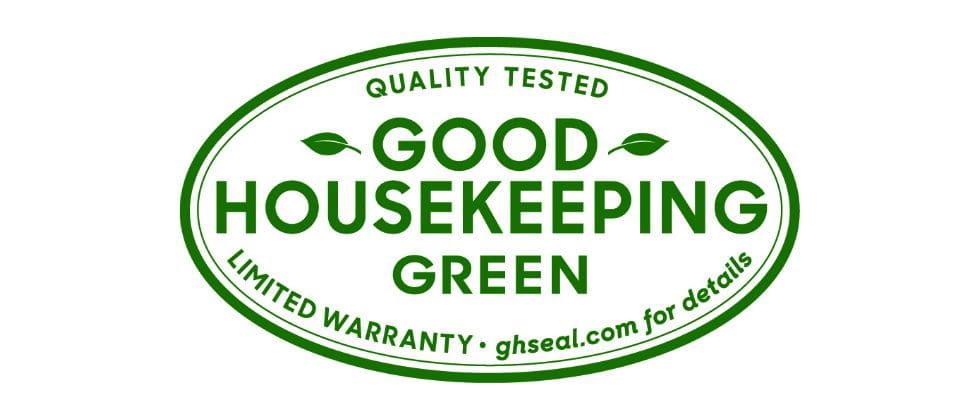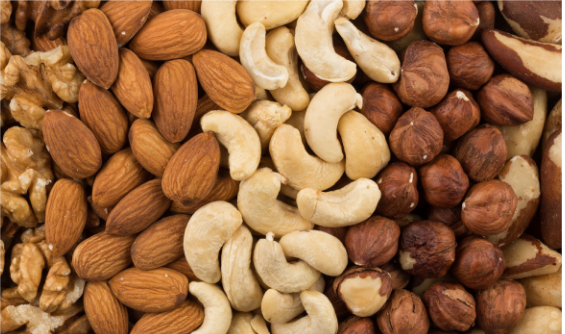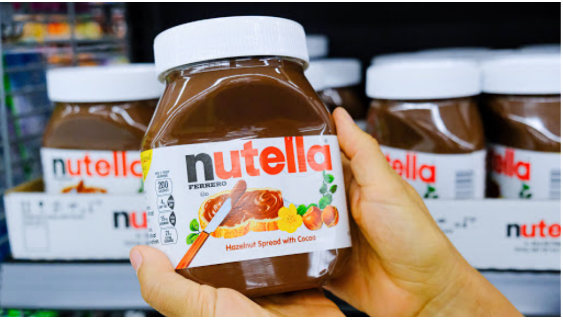Your cart is currently empty!
A Written History Of The Good Housekeeping Institute
The Good Housekeeping Institute (GHI) has a rich history that dates back to the late 19th century. It is closely associated with the Good Housekeeping magazine, first published in 1885 by Clark W. Bryan. The magazine aimed to provide practical advice and information to American women on various topics. The topics would include housekeeping, homemaking, and family life.
The history of the Good Housekeeping Institute started in 1900 with the establishment of a lab to test and evaluate consumer products. Their goal is to provide trustworthy recommendations to readers. Ensuring that the product advertisements in the magazine were of high quality and lived up to their claims. The institute became a pioneer in consumer advocacy and product testing.
Harvey Washington Wiley
Under the leadership of Good Housekeeping editor-in-chief Dr. Harvey Washington Wiley, the institute introduced the Good Housekeeping Seal of Approval in 1909. This seal became a symbol of quality and reliability for consumers. To earn the seal, products had to undergo rigorous testing and evaluation by the institute’s experts. The Good Housekeeping Seal of Approval became a trusted mark and its presence on a product assured consumers of its quality.
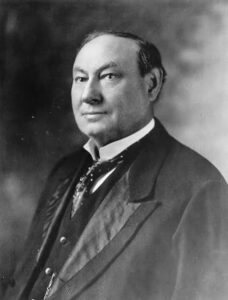
Over the years, the Good Housekeeping Institute expanded its scope beyond product testing to include research on various home and family life aspects. It continued to evolve with the changing needs and interests of American households. The institute’s experts tested and evaluated various products, including household appliances, cleaning supplies, beauty products, etc.
In addition to product testing, the history of the Good Housekeeping Institute played a crucial role in promoting consumer education. It gave readers valuable information about nutrition, health, parenting, and home maintenance. The institute became a trusted source of advice for generations of American families.
In the late 20th and early 21st centuries, the Good Housekeeping Institute embraced digital platforms, reaching a broader audience with its research and recommendations. The institute’s website became valuable for consumers seeking reliable product information and lifestyle choices.
The Good Housekeeping Institute’s commitment to quality and consumer advocacy has contributed to its enduring legacy. The Good Housekeeping Seal of Approval symbolizes trust. The institute remains a respected authority in consumer product testing and research.
Good Housekeeping Timeline
Founded in 1900, the Good Housekeeping Institute was initially called the Good Housekeeping Experiment Station. The invention of electricity introduced many new labor-saving home appliances, but few consumers knew their operation and maintenance. Intending to study “the problems facing the homemaker and to develop up-to-date firsthand information on solving them,” the staff at the GH Experiment Station tested products and housekeeping methods. It published articles about their discoveries and observations. They also reprinted advice from readers who wrote them. One reader offered a cure for callouses (she used olive oil and cotton); another advised how to launder lace drapes; and another gave tips about cleaning a meat chopper.
Food Testing For Quality Products
Concerned about adulteration and misbranding, home economists on staff also tested foods for purity and published, starting in 1905, a “Roll of Honor for Pure Food Products” each month. All this testing (at what was now called the Good Housekeeping Institute) resulted, in December 1909, in the beginning of the “Tested and Approved List” of all household products that were found to meet the Institute’s standards of excellence. Good Housekeeping’s Seal became so well known that it has become part of the lexicon with celebrities, governments, and manufacturers.
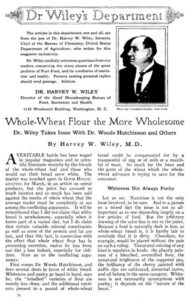
Today, the history of the Good Housekeeping Institute has led to its operation being located in the Hearst Tower in New York City. The office has a staff of chemists, biologists, nutritionists, engineers, home economists, and culinary experts who evaluate thousands of consumer products yearly. From microwaves and mascaras to food snacks, vacuums, and towels. These reviews are highlighted in the magazine and online. When products are evaluated for the Good Housekeeping Seal and the Green Good Housekeeping Seal, they represent Good Housekeeping’s two-year limited warranty. Promising a replacement or refund of up to $2,000 if a Seal product becomes defective within two years of purchase. Certain exclusions apply for the refund.
Here Are Highlights From Over A Century Of The Good Housekeeping Service:
1885
Good Housekeeping published its first issue in May 1885. The magazine’s title is Good Housekeeping: Conducted in the Interests of the Higher Life of the Household.
1885-1900
Good Housekeeping regularly publishes articles about food safety and food adulteration. Including ones about milk dealers adding water and dangerous preservatives to their product (September 1887), candy being contaminated with pulverized asbestos and other hazardous ingredients (February 18, 1888), adulterated chocolate (1886), spices, and coffee. What begins as reportorial items in the magazine changes toward the end of the century when Good Housekeeping takes a more active role in calling for government action.
1900
Good Housekeeping opens the Good Housekeeping Experiment Station.
October 1901
Good Housekeeping launches a campaign for national pure food law (“A Campaign for Pure Foods: How Every Individual, Family, and Organization May Promote This Great War”) and urges readers to write in for a packet about how to participate in the campaign.
1902
Good Housekeeping published a piece by Harvey Wiley on “Injurious Food Adjuncts.” In this case, Adjunct was used before the word additive. Adjunct means a thing added to something else as a supplementary rather than an essential part. The article addresses the problem of formaldehyde in infant formula, milk, and cream.
1906
Congress passed the Pure Food and Drug Act, which was endorsed and supported by Good Housekeeping.
1908
Good Housekeeping staffers persuaded a builder and an architect to install the Experiment Station sinks at a comfortable 36 inches, establishing the standard height for all kitchen sinks and counters. Before this, sinks were built low to the ground, requiring users to bend over.
1909
The Good Housekeeping Seal launches with twenty-one consumer products listed in the issue. Any product that withstands the investigation of the Institute staff is eligible to be included in the newly developed “Tested and Approved” products to be published in the magazine.
1910
The Experiment Station is renamed the Good Housekeeping Institute. From then on, a facility on the street level of the Good Housekeeping building in Springfield, Massachusetts. Including a model kitchen, domestic science laboratory, and test stations.
1912
Thomas Edison predicted in a GH interview about the liberating impact electric household appliances will have on American women.
Dr. Harvey Wiley, “the Father of the Pure Food and Drug Act,” leaves his position in Washington’s Bureau of Chemistry at the Department of Agriculture, now called the FDA. In the history of the Good Housekeeping Institute, Dr. Wiley became the Director Of The Bureau of Foods, Sanitation, and Health, therefore giving Good Housekeeping a new respectability. His articles in Good Housekeeping include research on deceptive food labeling, practices, and food safety problems and his answers to reader questions in the “Question Box” feature. This showed his wisdom, care, and insight. The customers followed his writings.
Who Was Dr. Harvey Wiley?
It’s a sweet story: Honey turned Harvey Wiley, M.D., the Institute’s longtime Director of Food, Sanitation, and Health, into a passionate consumer advocate. Born in 1844, Wiley fought in the Civil War, went to medical school, then taught chemistry. In 1878, fiddling with a polariscope, a device for measuring stress in glass, Wiley examined various transparent foods. He was shocked to learn that what companies passed off as pure honey was mainly glucose.
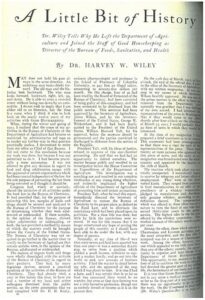
Thus began his lifelong campaign against mislabeled and dangerous products. He spent 29 years as the chief of the U.S. Department of Agriculture’s Bureau of Chemistry, where he fought to pass the 1906 Pure Food and Drugs Act. In the history of the Good Housekeeping Institute, from 1912 to 1930, Dr. Wiley alerted readers to food fraud. Including treating spoiled vegetables with chemicals to “revive” them. In 1911, Wiley sued Coca-Cola for failing to label the soda containing habit-forming caffeine. He lost the headline-making case, but it paved the way for future truth-in-labeling laws.
1913
At a time when white rice and white bread are touted as “pure,” Dr. Wiley urges Good Housekeeping readers to recognize the nutritional benefits of whole grains.
1914
An article entitled “Swindled Getting Slim” warns readers about fad diets, “Don’t believe anyone who tells you that you can reduce your weight with no injury to your health without dieting, exercise, and right living … Overeating and under-exercising are the main causes of too much fat.”
1917
An editorial depicting women’s domestic work as part of the U.S. military effort solicits women as “kitchen soldiers,” asking readers to pledge to conserve food. “Once you have enlisted as a Kitchen Soldier, your kitchen is your battlefield. Therefore, you must fight your fight. When you hit upon a good idea, please sit down and write to us. Tell us how you found that you could get along without some food that may mean life and comfort to a soldier in a foreign trench. Tell us new combinations, new substitutes, new shortcuts. We want a flood of letters bearing your discoveries.”
1921
Dr. Wiley urged Congress to pass the Maternity Bill 1921, which allocates federal funds for improved infant care; this bill eventually lowered infant mortality rates.
1927
Dr. Wiley warns women about the dangers of too much sugar consumption. “The trouble with sugar is we use too much. We consume about 100 pounds of commercial white sugar per person annually.”
1928
Dr. Wiley alerts readers about the dangers of tobacco. “Cancer of the lips, tongue, and throat is much more prevalent among men than women. I consider this due to the use of tobacco, particularly smoking.”
1930’s
Women enter the factories and spend less time at home; food editor Dorothy Marsh begins her “60-Minute Menu” series, which helps women cook a nutritious meal after a long workday.
1932
Way before the role of sugar in tooth decay is firmly established, GH warned readers. “An excess of sweets encourages the development of the organisms in the mouth which attack tooth enamel and thus initiate the first stages of decay.”
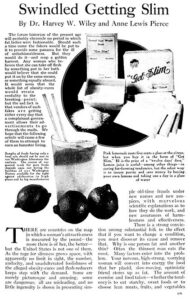
1941
The Good Housekeeping Seal of Approval is changed to the Good Housekeeping Seal. Products advertised in the magazine that bear the Seal are tested by the Good Housekeeping Institute and are backed by a two-year limited warranty.
1952
Good Housekeeping has stopped accepting cigarette ads due to their harmful effects on health. This is 12 years before the Surgeon General issues a report on the health hazards of smoking.
1969
Good Housekeeping endorses the Child Protection and Toy Safety Act. Calling for screening toys and rejecting ads for toys with sharp edges or small parts that pose a hazard.
1972
The Good Housekeeping Institute helps establish clothing care industry standards. Soon, this led to the Clothing Care Labeling Law, which mandates care instructions on garments.
1983
A monthly section devoted to reporting on microwave innovations and microwave recipes.
1998
After a reader whose child was strangled by an ill-fitting crib sheet alerts Good Housekeeping, the Institute tests crib sheets and finds that most are too small or use poor-quality elastic. This causes the sheets to come off the corners of the mattress, which increases the risk of infant strangulation and suffocation. The Institute set a new crib sheet standard, which the American Society of Testing and Materials is evaluating.
2000
The Institute finds that certain children’s bicycle helmets fail to meet the federal Consumer Product Safety Commission (CPSC) safety standards. As a result, the CPSC recalled more than 240,000 helmets. Importantly, it is the largest bicycle helmet recall in history.
Also, in 2000, the Institute had consumers use standard fire extinguishers and found that most are used improperly. Specifically, the Institute provides advice on how to use extinguishers properly.
2003
The Good Housekeeping Institute tests water toys and finds some that pose serious hazards.
2001, 2003, 2010, And 2014
The Good Housekeeping Institute evaluates Halloween costumes for children and identifies some that don’t meet federal flammability standards.
2004, 2006
The Good Housekeeping Institute’s Nutrition Department identifies packaged foods whose labels misrepresent a typical “serving.” For instance, one donut’s “serving” was one-third of the donut. A cookie’s “serving” was listed as half a cookie.
2005
The Good Housekeeping Institute warns that some children’s skateboards and power scooters go dangerously fast, have inadequate brakes, and help draft new safety standards.
2006
The Good Housekeeping Institute moves into the LEED-certified Hearst Tower in New York City, the first “green” office building in NYC.
2006
The Good Housekeeping Institute’s Textile Director investigates high thread-count sheets at low prices.
2007
The Beauty Lab tests moisturizers and finds that a $25 cream keeps skin hydrated longer than the more expensive creams (even the $350 one).
2008
GH engineers tested pool alarms and found that three failed. Readers are encouraged to send letters to their representatives in Washington to support the Virginia Graeme Baker Pool and Spa Safety Act, which became effective on December 19, 2008.
The Home Safety Council presents Good Housekeeping with a Beacon Award for accurate and educational reporting and for helping Americans understand what they can do to be safer in and around the house.
Testing plastic wraps and food storage containers determines that potentially dangerous chemicals leach into food during microwaving. Subsequently, no BPA or phthalates labeling becomes accurate in all the zapped samples for testing.
Good Housekeeping publishes a special report called “Roller Coaster Roulette.” Asking readers to write their state representatives to co-sponsor the National Amusement Park Ride Safety Act.
The first annual Best Toy Awards are published in the December issue. All toys are vetted by kid-testers and examined by Good Housekeeping Institute engineers to ensure they conform to industry safety standards.
2009
The experts tested nineteen thermal containers in the Kitchen Appliances and Technology Lab. Only one was found to keep food safe at hot or cold temperatures.
GH’s Textiles Lab alerts consumers that because of chemical processes, bamboo fabrics are no more environmentally friendly than rayon. In conclusion, 78 retailers have been warned by the FTC to stop labeling products as “bamboo” to suggest greenness.
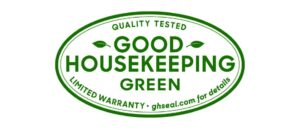
Good Housekeeping introduces the Green Good Housekeeping Seal, an environmental emblem with comprehensive life cycle criteria.
2010
The Good Housekeeping Institute tests earrings and necklaces marketed toward children at leading retailers for heavy metals, including lead and cadmium. All items contain lead at levels well above the government’s limit in children’s products. Also, many contain cadmium.
The Home Appliances and Cleaning Products Lab investigates household products with packaging that may pose safety risks to children, including air fresheners that look like bowls of candy and all-purpose cleaners that could be mistaken for sports drinks.
3-D glasses given out at movie theaters are found to harbor bacteria, with one being potentially lethal bacteria. The Institute recommends bringing an alcohol wipe to movie theaters to reduce bacteria by more than 95%.
The Good Housekeeping Institute would recruit families nationwide with children under three years old. They would hire them to visit local fast-food restaurants and request special toys for younger children with their kids’ meals. Nearly all 15 locations gave out toys to toddlers. These toys are only appropriate for older children because small parts pose choking risks.
While evaluating full-size strollers, the Good Housekeeping Institute discovers more than a quarter of those tested pose potential hazards to young children. Good Housekeeping urges the industry to address a loophole in the safety standard regarding the hood’s hinges. In 2013, the U.S. Consumer Product Safety Commission (CPSC) voted to approve the creation of a federal safety standard for strollers.
2011
The testing of four salon keratin hair treatments shows formaldehyde in the results. The toxic chemical is found in all four products at levels exceeding the Cosmetic Ingredient Review’s 0.2% recommended threshold. Later that year, the FDA issued a warning letter to the distributor of one tested brand for falsely labeling the product as “formaldehyde-free.” In addition, the Occupational Safety and Health Administration (OSHA) issued a hazard alert later that year. The alert regards keratin treatments and the risk to salon workers.
Children’s rain jackets are tested and found to exceed the Consumer Product Safety Improvement Act’s limit on lead and phthalates.
Sand from five out of nine backyard sandboxes across the country tested positive for the E. coli bacteria and seven for two types of roundworm eggs.
Good Housekeeping launches an annual review of cars, considering road and highway performance, gas efficiency, and numerous family-friendly features.
Top-brand mugs are found to contain lead and arsenic, although neither leached out during tests. Some registered surface temperatures over 140°F are hot enough to burn skin and above the voluntary standard. A highlight of the history of Good Housekeeping is when they urge the Consumer Product Safety Commission (CPSC) to mandate that ceramicware pass temperature tests before with the label of “microwave-safe.”
2012
The Good Housekeeping Institute tests the accuracy of drugstore blood pressure monitors. Ultimately, they found that nearly half of the readings were off by more than five points. None of the four machines contained accurate guidelines.
Nearly half of the workout weights deviate from the weight claimed. Over a quarter of the mates don’t match in pairs of weights.
Portion deceptions are discovered at popular national restaurants, including “Pizza for One.” A pizza listing for one customer on the restaurant’s website has the equivalent of four servings. Subsequently, Good Housekeeping would urge all its readers to check restaurant websites for serving sizes and nutritional information before ordering.
2014
Good Housekeeping identifies seven mini flat irons that reach average temperatures of 230°F. Above water’s boiling point of 212°F. Posing dangerous burn risks to the skin and scalp.
2016
The Good Housekeeping “Nutritionist Approved” Emblem launches this year. Specifically, the Nutrition Lab led their program while overseen by a Registered Dietitian. The program’s design is to help consumers simplify making informed food choices.

